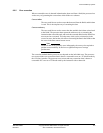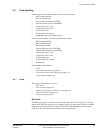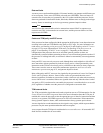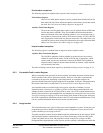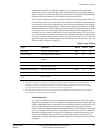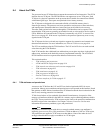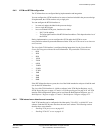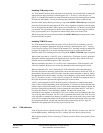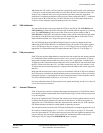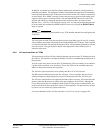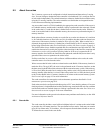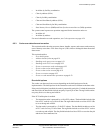
Level One Memory System
ARM DDI 0363E Copyright © 2009 ARM Limited. All rights reserved. 8-14
ID013010 Non-Confidential, Unrestricted Access
8.4.2 ATCM and BTCM configuration
The TCM interfaces are configured during implementation and integration.
You can configure the ATCM interface to be removed, and not included in the processor design.
If implemented, the ATCM can have only a single port.
You can configure the BTCM interface to:
• be removed, and not included in the processor design
• have a single BTCM port
• have two banked BTCM ports, interleaved on either:
— Bit [3] of the address
— The most significant bit of the BTCM interface address. This depends on the size of
the BTCM.
During implementation, you can configure the ATCM and/or the BTCM to use an
error-protection scheme to protect the data stored in the TCM, see TCM internal error detection
and correction.
The size of each TCM interface is configured during integration. See the Cortex-R4 and
Cortex-R4F Integration Manual for more information. The permissible TCM sizes are:
•0KB
•4KB
•8KB
• 16KB
• 32KB
• 64KB
• 128KB
• 256KB
• 512KB
•1MB
•2MB
•4MB
•8MB.
If the BTCM interface has two ports, the size of the RAM attached to each port is half the total
size for the BTCM interface.
The size of the TCM interfaces is visible to software in the TCM Region Registers, see c9,
BTCM Region Register on page 4-57 and c9, ATCM Region Register on page 4-58. All TCM
interface build configuration options can be read from the Build Options Registers, see c15,
Build Options 1 Register on page 4-72 and c15, Build Options 2 Register on page 4-72.
8.4.3 TCM internal error detection and correction
Each TCM interface can be configured with either parity, 32-bit ECC, or 64-bit ECC error
schemes. Both the BTCM ports must have the same error scheme. The following sections
describe these error schemes:
• Handling TCM parity errors on page 8-15
• Handling TCM ECC errors on page 8-15.



